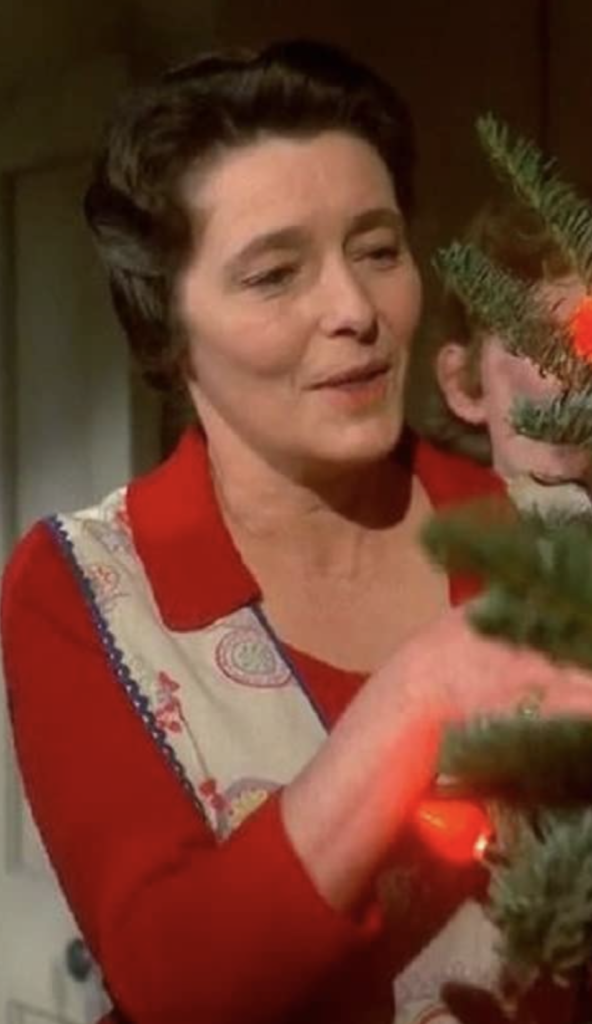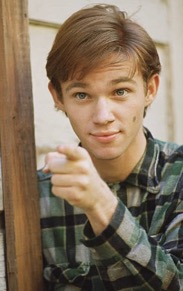It took me all of 15 seconds to dismiss the 2021 “update” of the The Homecoming.
I just happened to walk in on it when my wife had it on in her office. Let’s set up the scene in all its milquetoast glory: Grandpa Walton (Alpha Trivette), John-Boy (Logan Shroyer), and Mary Ellen (Marcelle LeBlanc) are all hanging out at the old homestead. This is the site of the original cabin built by Rome Walton in 1789 and it is visited from time to time throughout the television series. All that remains is the chimney and part of the field stone foundation. When I saw the remains of the chimney, heard the snippets of 21st century dialogue, I put 2 and 2 together. “Did they remake The Homecoming?” I asked. My wife looked up from her work, and glanced at the TV. “Oh yeah, they did,” she said with some resignation.
The Homecoming: Improving The Perfect
Let’s Re-write A Streetcar Named Desire While We’re At It.
In this version of The Homecoming, Grandpa is giving the oft-repeated insight on the sacredness of the land (of course). The kids are listening with rapt attention and giving the appropriate feedback. Marcelle LeBlanc in particular is giving it her all. With an earnestness born of desperation, LeBlanc is clearly walking a tightrope here. On one hand, she is determined not to channel Judy Norton who originated the character. On the other, she is also trying to find some way to convincingly bring Earl Hamner’s proto-feminist creation to life. Credit where it’s due.
The scene itself is defined by its lack of authenticity, with its bright colors and modern-day word smithing. The producers had to know that comparisons to the 1971 version of The Homecoming were inevitable. With respect to this ‘after school special’ version, there isn’t a lot of it out there beyond some promos on YouTube, so my research here is admittedly sketchy.
Let’s See If We Can Improve On That Sistine Ceiling, Shall We?
Some characters are best left frozen in time, and masterpieces should be left alone. The original Star Wars, and Casablanca come to mind. Touching up the Mona Lisa or The School of Athens is pretty much off limits. Rules upon which there is universal agreement.
OK, enough pooping on the remake. I’d much rather cover that which made Earl Hamner’s original The Homecoming a classic. Pardon the dissection. If you enjoyed 1971’s The Homecoming, I hope this doesn’t spoil it for you.
Chicken/Egg
The movie was based on Hamner’s novel of the same name, published the year prior. Or the book was based on the movie and written to capitalize the relative success of the television movie. Or… the book and the movie were created concurrently much like 2001: A Space Odyssey. I’ve uncovered facts here and there that tend to support the first and second theories. The third theory is my own compromise. In the novel, the family name is Spencer, not Walton, and John senior and John-boy become Clay, and Clay junior respectively. This fact tends to support the first theory.
The Homecoming Synopsis:
1933 rural Virginia. America is in the early stages of what we would later call The Great Depression. An era that would have lasted all of 18 months had Warren Harding been in the Whitehouse.
John Walton, Sr is working some distance away from home. It’s not made particularly clear where or what he’d doing. Factory? Machine Shop? Something that requires working during the Autumn and Winter months. The crops are in, construction in rural America is at a standstill, so the work is likely inside.
On Christmas Eve, Olivia Walton receives word that her husband is boarding a bus and coming home on that afternoon. So, it’s literary The Homecoming. The seven Walton Children introduce themselves to the viewers. Most of the screen time goes to John-boy and his sister Mary Ellen. There is news of a Bus crash on the radio. As the afternoon wears on, Olivia sends her eldest son out to look for her husband. I can excuse Hamner borrowing from Bunyan’s Pilgrim’s Progress because he takes such a low-key approach.
A Hero’s Journey.
John-boy’s first stop is Ike’s Godsey’s General Store where he speaks with Mr. Godsey, Sheriff Bridges, and Charlie Sneed, the Sherriff’s Prisoner hand cuffed to a chair. Bridges is indulging himself with shooting a rack on Godsey’s billiards table. Sneed has spent his Christmas Eve pilfering Turkeys and Hams from the regional wholesaler, selling some, and distributing others to those families he deems to be in need. How Bridges caught him is not fully explained. Sneed of course sees himself in the role of Robin Hood. Bridges naturally takes a contrary view, with Godsey attempting to ride the fence. Godsey makes a plea for clemency to no avail. Bridges asserts that he will lock up Sneed for the night as soon as he clears the table.
Taking Help Where You Can Get It.
With the two local authority figures unable or unwilling to assist John-boy in the search for his father, the cagey Sneed urges John-boy to reach into his pocket for the keys to his vehicle. The mission-oriented 16-year-old John-boy naïvely drives away with Sneed’s car, taking with him the evidence Bridges needs to justify locking up Sneed on Christmas Eve.
Night falls, the snow begins to come down in earnest, and John-boy struggles to stay awake. With a nod to Hamlet, he converses with his Father (whom we find out at the end is still very much alive). Sneed’s vehicle runs out of gas. John-boy is now on foot, and is in some peril. His back-woods grit seems him through to Reverend Dooley’s (Blazing Saddle’s Cleavon Little) Church where the children are performing their Christmas play. Dooley brings him to the Baldwin sister’s home. After an agonizing period of formalities, the sisters reveal that while they don’t have any gasoline or a vehicle, they are more than happy to lend their visitors the sleigh sitting in the barn.
Dash Away All.
They hitch up the horses and a mildly intoxicated Dooley takes the reins. This turns out to be short lived. The party discovers a downed tree blocking access few miles down the road. Given that the woods are two thick for the sleigh, the party has no choice but to turn back. Near mid-night, back at the Walton Home, a despondent John-boy is confronted by his enraged and grieving mother.
Olivia despairs, and the children look on in bewilderment, have clearly never seen their usually iron-willed mother in this state. Enter John Walton (played by John Duggan), having managed to hitchhike home. John distributes presents to the children, and a Merry Christmas to All and to All, a good night. It all does seem to happen rather quick, yet it works well.
The Formula.
Simple plot heavily driven by the cast. The characters are complex, multi-dimensional, with rich, layered textures. Problems are not easily resolved and there are plenty left at the end.
Patrica Neal as Olivia Walton.

Without a post-stroke 44-year-old Patricia Neal ensconced in the role of Olivia Walton, The Homecoming fails. The dynamic between her and Richard Thomas is what makes the story work. Olivia Walton misses her husband, and yet must be strong for her children. Neal plays it like every decent mother I knew who cut their teeth in the Great Depression. Tough as nails. Capable of great joy. Both baffled by and loving to her children, and yes at times just a little abusive. Maybe more than just a little. Moms are human too, and need forgiveness. Still, the love Olivia has for John-boy pours forth.
Every Mom.
Having never been a boy herself she makes a good-faith effort to understand her son up to a point. I say up to a point because Olivia Walton needs her son to perform. Any privileges he accrues as the eldest child need to be earned in spades. Olivia’s desire for John-boy’s obedience and her demand that he act like a man illustrates the conflict within her and within all moms.
Her effort to work through this internal struggle is what make’s Neal’s portrayal shine. This is something all mothers go through. In order for a mother’s nurturing to take effect, she must give up some of her power. Not easy. As the story plays out, she finds out that John-boy keeps a journal, and he expresses his ambition to become a writer. Here we are introduced to the paradox that is Olivia Walton. First, she holds her approval in reserve; second, with remarkable restraint Olivia does not demand that John-boy hand over his journal for her to read.
Richard Thomas as John-boy Walton.
We find out later in the series that the Waltons operate a lumber mill on their property with the business going back a least a generation. There is a little continuity problem with this. I looked up some memorabilia from the series and found a logo establishing the mill operations in 1935. The Homecoming takes place in 1932. Let’s all agree to forgive.

John-boy helps out with the business of course, and at the same time realizes that it doesn’t square with his goals in life.
There’s this defining scene with his grandfather I just love. The two traipse out into the mountainside snow drifts to cut down this year’s Christmas Tree. Grandpa already knows which one, having likely marked it out weeks if not months beforehand. John-boy’s job this year, like every year, is to carry the axe, and help Grandpa drag the tree back. Only this year its different. In a great coming-of-age moment, Grandpa points to the tree, and tells John-boy to cut it down. With a loud whoop, John-boy runs forward to perform his task.
Judy Norton as Mary Ellen Walton.

Mary Ellen attempts to assist John-boy in a chore in one of the sheds. Bother and sister converse, and Mary Ellen expresses her frustration at the constraints of their rural lifestyle, becoming louder and more volatile. Older brother John advises her to calm down and try to focus. Thirteen-year-old Mary Ellen, clearly in the throes of puberty, responds by pacing the floor and asserting “I-am-calm! I-am-calm!” John-boy chuckles and says, “you sure got the fever.”
I’ve never been a thirteen-year-old girl, so my empathy is lacking here. I still thought Judy Norton demonstrated the turbulence that goes on within young women rather well. Norton’s performance added some extra depth to The Homecoming. Given her age at the time, maybe it wasn’t much of a stretch. Rather than some sort of you-go-girl “wonder years” performance, Mary Ellen is looking around asking (quite reasonably I think), “is this all there is?” And, naturally demanding,“Where are the boys? I was told there would be boys.”
Andrew Duggan as John Walton.

John Walton comes home with a sack full of presents. One for his wife, and one for each child. His gift to his eldest son is telling on one level after another. John-boy removes the wrapping and finds that his father had given him half a dozen legal sized writing pads. (They called them tablets, which I thought was really charming and folksy).
With the merest shrug, John Walton addresses his eldest, “I don’t know a thing about the writing trade, son. But if you wanna take it up, you gotta give it your best.” There is so much to unpack here. John Walton’s enlightened view. His ability to comprehend the big picture beyond the Blue Ridge Mountains of Virginia. His awareness of the existence of his son’s “secret” journal and his son’s ambition. At some point in the series, we find out John was made a sergeant during World War I. It’s implied that his ability to read and write played a large part in separating him out from the pack of conscripts. John Walton clearly valued literacy and the places it could take his children. I think he knew more about the “writing trade,” than he modesty led on.
The Rest Of The Team.
The supporting cast is clearly up to the task. The young actors deliver their lines with a refreshing realism. This isn’t the Hallmark Channel (which I like, by the way). There are no postcard streets where couples walk arm in arm through the gently falling snow. Here between the foothills of the the Blue Ridge and the Shenandoah, Winter kills. People cling to their family and faith. People follow the rules of civilization. And are the better for it.
Selah.


Facebook Comments